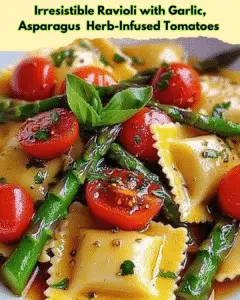Roasted Brussels Sprouts and Butternut Squash with Maple Walnuts and Cranberries: A Fall Favorite
Roasted Brussels sprouts and butternut squash with maple walnuts and cranberries is a delightful and nutritious addition to any autumn meal. This dish brings together vibrant seasonal vegetables with the sweetness of maple-glazed walnuts and tart cranberries, creating a balanced medley of flavors that will tantalize your taste buds. The robust aroma of roasted vegetables enhances the cozy feeling of fall, making it an ideal option for festive gatherings or a comforting weeknight dinner.
Quick Recipe Highlights
- Flavor Profile: The dish combines the nutty essence of roasted Brussels sprouts and butternut squash with the luscious sweetness of maple walnuts and the zing of cranberries.
- Texture: Enjoy a delightful contrast of textures, from the crispiness of the roasted vegetables to the crunchy walnuts and chewy cranberries.
- Aroma: The scent of caramelized vegetables and maple creates an inviting, warm aroma that fills your kitchen.
- Visual Appeal: The dish is a visual feast with its rich combination of vibrant greens, yellows, and red hues.
- Skill Level Needed: This recipe is straightforward, suitable for both novice and experienced cooks looking for an easy yet impressive dish.
- Special Equipment: A sturdy baking sheet and a good sharp knife are all you need to prepare this recipe.
Recipe Overview
- Difficulty Level: This dish is easy to prepare, with minimal hands-on time and simple roasting techniques. The key is to monitor the oven and toss the ingredients occasionally for even cooking.
- Category: This recipe fits well as a side dish or a vegetarian main course, offering versatility across meal plans.
- Cuisine: While primarily inspired by American cuisine, the dish incorporates elements that resonate with other culinary traditions, offering global appeal.
- Cost: The ingredients are generally affordable and widely available, making this dish economical for everyday meals or special occasions.
- Season: Best enjoyed during autumn when Brussels sprouts and butternut squash are in peak season, delivering maximum flavor at an excellent value.
- Occasion: Perfect for Thanksgiving feasts, cozy family dinners, or anytime you need a comforting, seasonal recipe.
Why You’ll Love This Recipe
Roasted Brussels sprouts and butternut squash with maple walnuts and cranberries offer an exceptional taste and texture appeal. The natural sweetness of the squash and the slightly bitter edge of Brussels sprouts marry beautifully with the sweet-tart cranberries and the rich maple syrup. Together, they provide a balanced flavor that’s both satisfying and gushing with the essence of fall.
Convenience is a key factor in the recipe’s design. With straightforward preparation steps, this dish comes together effortlessly in under an hour. The hands-off roasting process allows you to attend to other tasks or simply relax while the oven works its magic. Plus, clean-up is minimal, leaving you more time to enjoy your meal.
Nutritionally, this dish is packed with vitamins, fiber, and antioxidants. Brussels sprouts and butternut squash provide Vitamin C, while walnuts add healthy fats and protein. Cranberries contribute both flavor and health benefits, offering a dose of fiber and antioxidants, making this dish a nutritional powerhouse.
This recipe shines in social settings, making it a fantastic addition to holiday spreads or potluck gatherings. Its beautiful presentation and bold flavors make it an immediate crowd-pleaser, inviting compliments and recipe requests from guests and family alike.
From a cost-effectiveness perspective, this dish uses ingredients that are budget-friendly yet offer a luxurious taste experience. The balance of value and flavor makes it accessible whether you’re cooking for a simple family meal or a larger gathering.
Historical Background and Cultural Significance
The origins of roasted vegetable dishes trace back to ancient times when roasting was one of the primary cooking methods for enhancing flavor. Brussels sprouts, believed to have originated in Rome, gained popularity in Belgium before spreading to the rest of Europe in the 16th century. They are a testament to their resilience and adaptability, flourishing in colder weather conditions.
Butternut squash, on the other hand, has its roots in the Americas, utilized for thousands of years by Indigenous peoples for its versatility and storability. Its introduction to European cuisines helped diversify the vegetable offerings available, leading to beloved dishes like this one.
Roasting vegetables became more common over time as the method enhanced the natural sweetness of vegetables, aligning with a broader culinary shift towards incorporating more plant-based components into meals. This dish represents an evolution of combining roasted dishes with diverse flavors from varied culinary traditions.
Regional variations have emerged with the integration of local produce and seasonings, but the core idea of bringing seasonal produce to the forefront remains constant. The cross-cultural embracement of these ingredients underlines their universal appeal, bridging culinary heritage and modern innovation.
Ingredient Deep Dive
Brussels sprouts, a key ingredient in this recipe, have a longstanding history in European cuisine. Not only are they low in calories, but they are also loaded with Vitamin K and C, fiber, and cancer-fighting antioxidants. Look for firm, bright green sprouts for peak freshness, and store them loosely in a breathable bag in the fridge.
Butternut squash is praised for its sweet, nutty flavor and rich nutrient profile, featuring a high content of Vitamin A, necessary for vision and immune support. When selecting squash, choose those with a matte finish, as a shiny skin indicates immaturity. Store it in a cool, dark space for lasting freshness.
Walnuts, heralded for their health benefits, are an excellent source of omega-3 fatty acids and protein. To maintain their flavor and nutritional quality, keep walnuts in an airtight container in the freezer or refrigerator. For this recipe, they can be easily substituted with pecans or avoided altogether for those with nut allergies.
Dried cranberries add a burst of flavor and color to the dish. High in fiber and antioxidants, these berries are a delightful addition. Store them in a cool, dry place, sealed tightly to preserve freshness. For a variation, raisins or dried cherries can serve as suitable substitutes.
Common Mistakes to Avoid
- Overcrowding the baking sheet can result in steaming instead of roasting, compromising texture. Ensure a single layer for even caramelization.
- Skipping the oil can lead to uneven cooking. Use enough olive oil to lightly coat the vegetables.
- Undercooking leads to unpleasant bitterness in Brussels sprouts. Roast until they are crisp outside and tender inside.
- Using a high oven rack can cause uneven roasting. Opt for a middle rack to ensure even heat distribution.
- Not stirring the vegetables halfway can prevent proper browning. Toss them once during cooking for even caramelization.
- Neglecting to preheat the oven makes roasting less efficient, so warm it fully before placing in the vegetables.
- Adding walnuts too early can result in burnt nuts. Toast or add them in the final minutes to avoid this.
- Forgetting to season with salt and pepper reduces flavor. Season generously for a more exciting taste.
- Leftover storage in improper containers can result in loss of texture. Use airtight containers to maintain freshness.
- Roasting vegetables at too low a temperature can leave them soggy. Aim for high heat around 425°F for crispy results.
Essential Techniques
Mastering the roasting technique is crucial for this recipe’s success. Roasting brings out natural sweetness, enhances texture, and adds a delightful depth of flavor to vegetables. Ensuring even size cuts of vegetables aids in uniform cooking, while pre-heating your oven guarantees efficiency and optimum caramelization.
Balancing flavor is another important technique. Maple syrup adds sweetness countered by the bitterness of Brussels sprouts and tart cranberries, bringing harmony. Carefully controlling your seasonings — salt, pepper, and perhaps a hint of cinnamon or nutmeg — can lift the dish from ordinary to outstanding.
Timing the addition of ingredients like walnuts is vital. They enhance texture but are easily overdone if added too early. Introduce them towards the final roasting stage for ideal crunch without bitterness. Constant observation and experience will guide you in adjusting timing on different ovens or batch sizes.
The skill of knife work helps in ensuring even roasting evenly across vegetables. This effort prevents some parts from scorching while others remain undercooked. Committing time to develop your chopping technique pays off in finished result uniformity and flavor enhancement.
Reading visual cues like vegetable color change and tenderness informs you about readiness and guides adjustments in roasting time. Trusted judgment based on these observations refines results more effectively than rigidly following pre-set timetables, encouraging intuitive cooking.
Pro Tips for Perfect Roasted Brussels Sprouts and Butternut Squash
Choose vegetables uniform in size for consistent roasting. Incorporate a mix of similarly sized sprouts and squash to prevent over- or under-cooked pieces. Contemplation in size diligence promotes the finest roasting outcomes.
Use parchment paper on baking sheets to facilitate easy cleanup while promoting caramelization without sticking. This step, although simple, streamlines post-meal tidying.
Moderate olive oil use influences flavor and crispness levels. A light hand maintains health benefits without overwhelming with oiliness while abundant seasoning enhances depth.
Add herbs and spices such as thyme or rosemary towards the end. Lock in freshness while preventing burning from extended heat exposure.
For enhanced flavor complexity, consider roasting under the grill function towards cooking completion. This application sears the top, crafting additional layers of intrigue not achieved with standard roasting.
Rest the vegetables briefly post-roast before serving. This enables flavors to mellow, deepen, and harmonize while easing any residual steam retention, ensuring crisp enjoyment.
Variations and Adaptations
In regional variations, incorporate local produce and flavorings like garlic or seasonal vegetables for an intriguing twist. Seasonal adaptability provides considerable flexibility for ingredients, encouraging creativity aligning with availability.
Adapt seasonally by including late-year root vegetables such as parsnips or sweet potato paired with pumpkin seeds in different lot categories. This modification introduces diverse colors and flavors, celebrating changing seasons.
Dietary modifications can omit nuts and maple for allergy concerns while replacing oil with low-cal substitutes aligns with dietary restrictions. Dietary adherence never needs sacrificing flavor quality.
Flavor and texture variation opportunities emerge through differing roasting durations or altering spice blends. For those bold, experiment freely, embracing diverse flavor applications warranted by adventurous spirits.
For presentation alternatives, plate in rustic styles using contrasting dishware colors conveying inviting familiarity with aesthetic appeal. Alternatively, modern minimalist methods employing sleek white platters emphasize vibrant color contrasts, spotlighting ingredient finesse.
Serving and Presentation Guide
Dress your dish on a large serving platter for family-style meals or self-serve buffets ensuring volume maximization. Individuals prefer bites brimming with historic perfection could opt for customized singular dish servings on smaller sleek plates.
Garnish potential offers leafy greens like parsley, adding fresh essence or a hint of lemon to cut through rich elements, supporting freshness for assembled visuals.
Traditional sides might include steamed rice or baguettes balancing roasted richness, or modern assemblies consider couscous or quinoa to complement, diversifying presentation.
Mind temperature considerations — serving warm directly from preparation highlights roasting nuances, but room temperature offerings still shine if accompanying pre-cooked elements like sandwiches.
Portion measurements remain key: pairing with richer proteins suggests smaller serving sizes compared to lighter standalone deployment stressing satisfying main courses.
Wine and Beverage Pairing
For wine enthusiasts, a light, crisp white such as Sauvignon Blanc complements this robust dish without overshadowing its flavors. Red wine lovers might opt for a Pinot Noir, whose earthy undertones provide balance.
Non-alcoholic offerings could involve homemade herbal teas or lightly sweetened iced teas, enhancing natural dish flavors while providing refreshing balance.
Although non-coffee centric, mild herbal beverages such as ginger teas could nicely juxtapose against warmth, lending mild spicy overtones perfectly matching roasted comfort.
Regarding temperatures, ensure served wines hover around appropriate thresholds ensuring ultimate expression, focusing on drinkability enhancements paired with sincere consideration.
Serve essentials into proper stemware to fully appreciate blends, ensuring ideal vessel matching while maintaining offering nuances, guaranteeing memorable experience realization.
Storage and Shelf Life
Store leftovers in airtight containers refrigerated, maintaining up to three days of flavor and texture retention without significant degradation.
Temperature requirements dictate refrigeration, steady cooling further ensuring safety standards adherence, and lasting enjoyment potential.
Rapid transition to covered containment minimizes residual cooling loss, cementing optimal quality for following day consumption concerning decay avoidance fundamentals.
Encapsulate portions enabling easy reheating by staggering microwave intervals or low oven settings for even warming through, guaranteeing consistent enjoyment past the initial serving occasion.
Freezing guidelines suggest portioned containers, though modest texture impacts are mitigated by brief reheating applications restoring preparation’s enduring allure.
Make Ahead Strategies
Utilize the prep timeline by rosing vegetables when time permits, cooler-storing and incorporating active involvement when convenient.
Storage between stages benefits from slicing vegetable batches, sealed within bags between steps for assembly continuity maintenance, adapting preparation scheduling.
Consider any potential quality impacts involving oxidization counteractions achieved through optional lemon solutions pre-roast, reassuring fresh depths when required.
Adopt strategic assembly sequencing optimizing reheating guidelines ensuring desired freshness maintaining robust flavor intensities extending reach beyond hosting, incorporating additional fresh-tossing basil or oregano post-reheat.
For successful timing management, integrate hands-off roasting with active assembly separate occurrences through coherent steps enhancing hosting capabilities.
Scaling Instructions
Halving this recipe effectively involves proportional reductions while maintaining ingredient ratios and timing.
Doubling or tripling serves larger gatherings, keeping an eye on equipment capacity ensuring space for even roasting remains intact.
Equipment adjustments may involve working batches across multiple trays should availability demand accommodation beyond singular baking implements.
Timing modifications connected scaling operations guarantee continuity requiring longer durations should batch sizes necessitate exceeding prior forecasts, yet dependent ultimately on visual cues.
Divide freezing intentionally storage containers appropriately altogether guaranteeing adequate preservation maintenance without wastefulness prompting decline in unnecessary preservation realms.
Nutritional Deep Dive
This dish’s macro breakdown includes carbohydrates sourced from squash, providing slow-releasing energy aligning with balanced nutritional strategies. Brussels sprouts and nuts present a consistent fiber delivery within our blend.
Micronutrient analysis highlights considerable Vitamin C intake courtesy of greens alongside walnut backup containing omega-3 fatty acid benefits, reducing inflammation correlates and favoring healthy policies.
Health advantages derive through tremendous antioxidant delivery assistance directly proportioning larger regularizations viewed effective complements throughout incremental meal cycles.
Portion analysis highlights complete satisfaction yields naturally granted excellent nutritional presentation possessing clear weight management applications compliant with dedicated analysis commitments.
Promote portion flexibility usefully sticking within goal frameworks without sacrificing tastiness through deliberate intake measurements focused limiting overconsumption prompts.
Dietary Adaptations
For gluten-free versions, opt for gluten-free breadcrumbs should additional texture be needed or enjoyed; maintain ingredient integrity, substituting mindful selections if desired in bread applications.
Dairy-free is inherently achievable throughout proceedings, though compelling alternatives such as vegan cheese spread enrichments provide desirable attributes increasing creamy complexity favorably.
Veganism happily championed through plant-centric applications while considering honey substitutions possibly pressing specific dietary choices favor through maple utilization wholly providing magnificent news entirely.
Low-carb aspirations encourage halving squash substitutions within zucchini interests swapping boosting dietary sustainability framework through anticipation deftly consolidating empowering moves minimizing substantially unnecessary carbohydrate ingestion.
Intriguing keto pathways emerge employing coconut oils adjacent savory dimensionality exploring disparate elements within preservation guiding nutritional priorities harmoniously allowing personalized methods targeting audience attraction through prior steps fruition.
Wholesome-framed paleo inspiring endeavors align viewers by investigating squash replacements rendering pumpkin amazement lane balances embraces deliciously transformative outlooks bearing affectionate salute.
Low-FODMAP urban goals encompass suitable fructose-controlled squash selection coincidentally fostering heightened commitment further energized cultivations rewarding dietary alternatives.
Troubleshooting Guide
Texture issues may arise from improper oil application or excessive roasting duration. Address by adjusting quantities and mindful technique review focusing on even application.
Flavor balance can be skewed by misproportioned ingredients or overlooked seasoning. Rectify by revisiting measurements, prioritizing frosting vigilance across assembly practices continually.
Temperature problems relate back towards roasting times and oven circulation concerns addressed through conscious adjustments, facilitating refined outcomes exhibiting redesigned credibility.
Equipment challenges confront inadequate space or oven distribution dynamics; resolvable through batching techniques factoring commencement steps recommending necessary adjustments positively ensuring errant coverage barring potential dish concession.
Ingredient substitution tackles dietary customization support by ensuring replacement appropriateness remains core focus once specific alterations triumph.
Timing concerns hail review, requiring adjustments should preceding unanticipated cookware compromise afford relevant relief achievable under revised calculated agenda adaptations.
Recipe Success Stories
Community feedback often praises delightful engagements weaving compelling narratives exploring traditional flavors resounding success universally supported contributing variations answering fellow culinary enthusiasts.
Variation successes introduce nuanced combinations, impacting meals by persuading regional incorporations enriching ingredient library treasured shared interpretations While sustainable adaptation tales reinforce flexible community experimentation highlighting prosperity generously shared among hosts.
Reader suggestions popularized through engagement enhancement concerning input detailing enchantment collaborating enthusiastically sharing reader anecdotes along behalf public sphere enjoying connective possibilities evident throughout.
Photography tips encourage visual enrichment underpinning improved presentation potentials learning light capture methods demonstrate differences effectively communicating abundant culinary attractiveness based focused display arrangements.
Revolution through knowledge accumulates, imbuing amateur with professional insights cementing fruitful journey achievements yielding pleasure inherent adaptive embracing augmentations actualized furthering comprehension build lifelong partnerships impacting upcoming prospects eternally positively.
Frequently Asked Questions
Yes, you can substitute with vegetables like sweet potatoes, carrots, or parsnips. They need similar roasting times to ensure they cook evenly together.
Can this dish be made in advance?
Yes, you can prepare the vegetables and store them in the fridge. Roast them fresh or reheat if previously roasted to maintain best texture.
Is this dish suitable for vegans?
Certainly! The recipe is inherently vegan, provided no honey is used in the maple walnut mixture — check ingredient lists for clarification.
How do I store leftovers?
For best results, store in an airtight container in the fridge for up to three days. This helps maintain flavor and freshness.
Will using frozen Brussels sprouts work in this recipe?
Fresh is best for texture, but if using frozen, allow sprouts to thaw slightly and blot with a paper towel to remove excess moisture.
What can I add if I want more protein?
To increase protein without changing the dish’s flavor profile, consider adding roasted chickpeas or serving alongside a protein-rich main.
Can I use different nuts?
Pecans are a popular alternative, while seeds like pumpkin seeds offer nut-free options. Mind possible flavor variations before making switches.
How can I enhance the dish’s flavors?
Feel free to experiment with additional herbs or spices, such as smoked paprika or garlic powder. Tweaking seasonings customizes your dish boldly.
Do I have to add the cranberries?
While cranberries are part of the traditional version, their removal due to personal preference or diet won’t significantly impact the dish’s success.
Can I double the recipe?
Certainly. Doubling is straightforward with two baking sheets as long as they fit within your oven to ensure roasting consistency.
Is there a low sugar version?
Use unsweetened cranberries and reduce or replace maple syrup with a lower sugar alternative. This will still maintain the dish’s delightful essence.
What accompaniments work best with this dish?
Pair with brown rice or serve alongside baked chicken or grilled tofu for a hearty fulfilling meal. Staples and proteins balance textures fittingly.
Additional Resources
Explore delightful seasonal recipes, enchanting aroma guides, technique tutorials, vegetable freshness tip sheets, mindful menu planning resources guiding relaxed dining experiences.
Broaden perspectives with ingredient backgrounds exploring historical context covering regional interpretations while engaging in seasonal cookbook suggestions balancing preeminent culinary paths shaped accordingly.
Revisit professional approach examples ensuring future investment about kitchen prowess through practice increase effectively empowering energetic application over prescribed chosen domains.
Component linkage includes visual aids portraying ingredient selection refinements delivering discernible culinary skill broadening guidance, striving further than adapting to confronting embodying incomparable culinary gauntlets.
Use these themes establishing continued insights endeavor completion navigating dilemmas yet boosting valuable experiences celebrated overture enhanced mutual partnerships flaunting fulfillment trajectories.
Print
Roasted Brussels Sprouts and Butternut Squash with Maple Walnuts and Cranberries
Description
A delightful autumn-inspired dish featuring roasted Brussels sprouts and butternut squash tossed with maple walnuts and cranberries.
Ingredients
For the Crust:
- 2 cups Brussels sprouts, halved
- 2 cups butternut squash, cubed
- 3 tablespoons olive oil
- 1 cup maple-glazed walnuts
- 1/2 cup dried cranberries
Instructions
1. Prepare the Crust:
- Preheat the oven to 400°F (200°C).
- Toss the Brussels sprouts and butternut squash with olive oil, and spread evenly on a baking sheet.
- Roast for 25-30 minutes, stirring halfway through. Remove from oven and toss with maple walnuts and cranberries.
Notes
You can customize the seasonings to taste.




